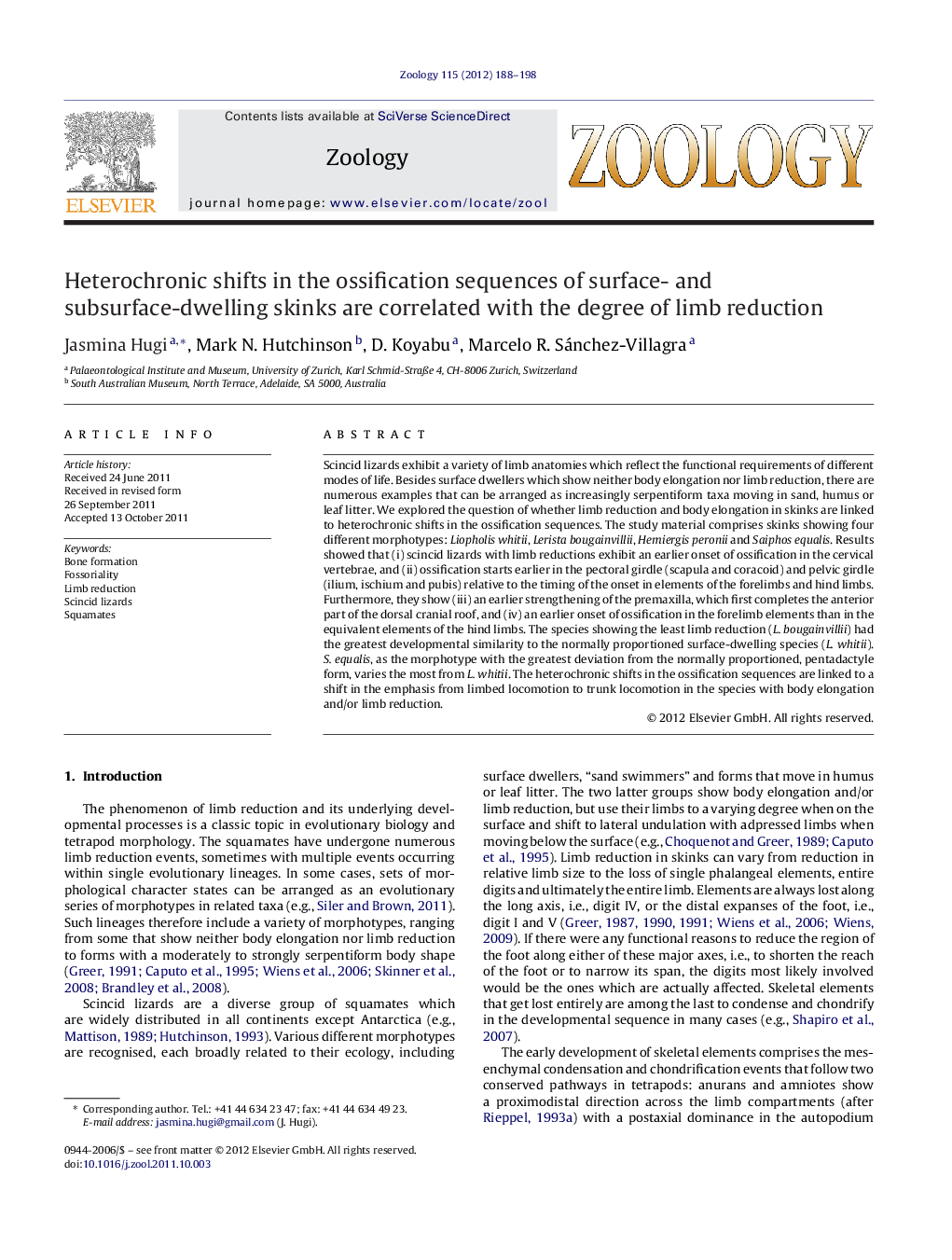| Article ID | Journal | Published Year | Pages | File Type |
|---|---|---|---|---|
| 2791169 | Zoology | 2012 | 11 Pages |
Scincid lizards exhibit a variety of limb anatomies which reflect the functional requirements of different modes of life. Besides surface dwellers which show neither body elongation nor limb reduction, there are numerous examples that can be arranged as increasingly serpentiform taxa moving in sand, humus or leaf litter. We explored the question of whether limb reduction and body elongation in skinks are linked to heterochronic shifts in the ossification sequences. The study material comprises skinks showing four different morphotypes: Liopholis whitii, Lerista bougainvillii, Hemiergis peronii and Saiphos equalis. Results showed that (i) scincid lizards with limb reductions exhibit an earlier onset of ossification in the cervical vertebrae, and (ii) ossification starts earlier in the pectoral girdle (scapula and coracoid) and pelvic girdle (ilium, ischium and pubis) relative to the timing of the onset in elements of the forelimbs and hind limbs. Furthermore, they show (iii) an earlier strengthening of the premaxilla, which first completes the anterior part of the dorsal cranial roof, and (iv) an earlier onset of ossification in the forelimb elements than in the equivalent elements of the hind limbs. The species showing the least limb reduction (L. bougainvillii) had the greatest developmental similarity to the normally proportioned surface-dwelling species (L. whitii). S. equalis, as the morphotype with the greatest deviation from the normally proportioned, pentadactyle form, varies the most from L. whitii. The heterochronic shifts in the ossification sequences are linked to a shift in the emphasis from limbed locomotion to trunk locomotion in the species with body elongation and/or limb reduction.
